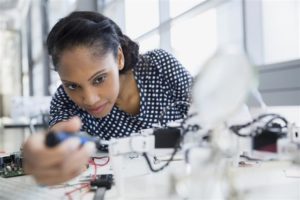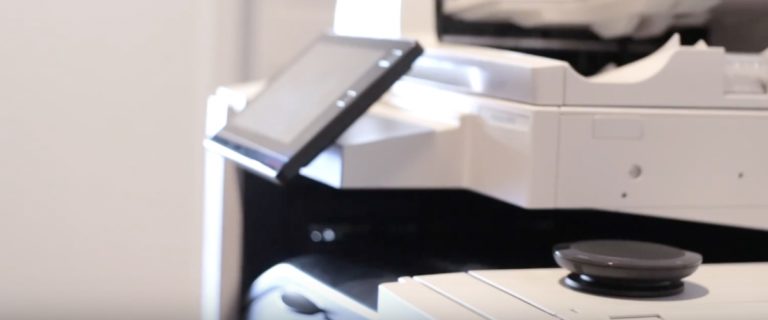By Gregory Pings

If I’ve learned one thing about artificial intelligence (AI), it’s that we’re a long, long way from seeing something like Data, the sentient android from the Star Trek franchise. Let’s be clear, however: AI has arrived, rolled up its metaphoric sleeves, and is working pretty darn hard in our world right now.
PARC CEO Dr. Tolga Kurtoglu told AI Trends that Xerox has several technologies at work in places where artificial intelligence and augmented reality intersect. This is more than coincidence, because Xerox’s business has always revolved around connecting the enterprise and its people to the flow of information, and allow them to share data more quickly and securely.
Here are the top three highlights from Dr. Kurtoglu’s AI Trends interview:
1) Hardware and software; cyber and physical
Trending products such as self-driving cars, connected thermostats, or autonomous cleaning robots tell us where the world is heading. They also help us understand PARC’s areas of focus for our AI research:

- Sense the world better: The internet of things (IoT) throw off huge amounts of data, but even machines need the right kind of data. “At PARC,” Dr. Kurtoglu told AI Trends, “we’re building some novel sensors [based on] our capabilities in producing low cost electronics, [which include] printed sensors and printed electronics, [as well as] radically new ways of sensing the world.”
- Elevate machine intelligence: The right kind of data allows machines and systems to perceive the world better. PARC researchers are studying how AI can elevate the level of intelligence that processes the data produced by these systems.
- Safety and security: Self-driving cars, robots, drones and other highly-connected systems must operate reliably in the cyber-physical worlds.
Artificial intelligence and innovation from Xerox
PARC, a Xerox company: Learn how PARC creates new business options, accelerates time to market, augments internal capabilities, and reduces risk for their clients.
Innovation at Xerox: The best way to predict the future is to invent it. Here’s what the future looks like, and where it’s being invented.
Xerox Connect reports on innovation: Reports on the innovative Xerox people and the technologies they invent.
2) Partnerships in machine intelligence
 Tokyo’s East Japan Railway Company has collected a significant amount of data from designing, manufacturing and operating the train systems. Used properly, this data can improve their approach to operations and maintenance.
Tokyo’s East Japan Railway Company has collected a significant amount of data from designing, manufacturing and operating the train systems. Used properly, this data can improve their approach to operations and maintenance.
“We started with train doors, then we moved into switch machines, then the rail tracks themselves over the course of a couple of years,” Dr. Kurtoglu explained. PARC built a platform that helps the railway’s service and maintenance department use real time data, and predict when components are likely to fail.
“That enables them to deploy their maintenance and service resources in a much more efficient way.”
Procter & Gamble had a different problem. One of their cosmetic beauty care brands found a disconnect in the way they engaged their target audience: It wasn’t working very well with the emerging generation. PARC’s human-centered design and user studies group studied P&G’s new consumers, and built a new mobile platform.
“We created an app with them that can analyze the skin characteristics of somebody, come up with a detailed analysis, then make some personalized, scientifically grounded product recommendations,” Dr. Kurtoglu said.
Basic research and practical applications
 For all the work PARC researchers put into practical applications, we’re still talking about a laboratory that made its name in basic research. It’s still an important part of PARC’s mission.
For all the work PARC researchers put into practical applications, we’re still talking about a laboratory that made its name in basic research. It’s still an important part of PARC’s mission.
For instance, Dr. Kurtoglu believes PARC has addressed a fundamental problem with how AI technologies are adopted. Algorithms are great at finding patterns in from huge amounts of data, learning from it, and even make recommendations. But algorithms cannot explain why they made a decision or recommendation. Explainable AI is the result of a research project that the Defense Advanced Research Projects Agency (DARPA) awarded to PARC. The work will bring transparency into an algorithm’s inner workings.
“In a nutshell,” the PARC chief explained, “… we’re trying to create a translation between how the human brain represents information and how these algorithms represent information in a semantic fashion. It’s a highly interdisciplinary research. We are working with some of the best cognitive scientists in the world on it, and we’re excited about some of the early results of the project.”
Another example of basic research: A partnership with the U.S. Department of Energy to develop smart monitoring that makes the U.S. electric power grid more secure and reliable. Transformers are among the weakest links in the grid, and PARC researchers know that fiber optic sensing – a proven technology – can be improved with AI and new analytics capabilities that process sets of data in real time.
“That’s very important when it comes to monitoring these transformer units in the grid, Dr. Kurtoglu said, “… and we’re really excited about the potential impact.”




[…] Cette publication de Gregory Pings a été diffusée en anglais sur le site : https://connect.blogs.xerox.com […]
[…] hat in der Denkfabrik und Entwicklungsschmiede PARC höchste Priorität. CEO Dr. Tolga Kurtoglu verfasste zur Rolle und Bedeutung im Juni 2018 ein lesenswertes Thesenpapier. […]